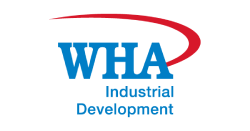Articles
The free flow of capital and investment by Mr. David Nardone President & CEO
26/11/2009Finding ways to enhance the free flow of capital and investment presents a unique opportunity for Asean to broaden its markets, increase economies of scale of manufacturing, and enhance competitiveness in export markets.
While the goal of an Asian Economic Community has been talked about for decades, we need to start by acknowledging that Asean today is not a homogeneous market. We have lost a step due to the past Asian financial crisis of 1997-98, as well as slow market liberalisation, and as a result, other markets have experienced faster growth and increased competitiveness.
For example, in 1995, China's automotive market demand was double that of Asean. Today, it is six times larger. Thailand, regarded as being highly successful in the automotive industry, has experienced little or no domestic growth since 1995, even setting aside this year's downturn, due to policies and high taxes that discourage domestic automobile consumption.
One positive trend from the last decade relates to foreign, mostly non-Asean, investment in manufacturing throughout Asean. These investors have chosen their industries, processes and products and located them where it made the most sense for their supply chain. Increasingly, they produce in larger-scale plants located in one country, trading among Asean, and integrating these operations into their supplier networks. This is positive for economies of scale, enabling manufacturing plants in Asean to be more viable in competing with higher volume non-Asean locations, such as China and eventually India.
We believe this has led to the manufacturing growth that Asean and certainly Thailand has experienced over the last decade, and Hemaraj has directly benefited from this trend.
As Asean expands its reach through free trade agreements with partners, such as China, Japan, Korea, and India, there is vast potential for further development of manufacturing supplier networks, economies of scale, and the overall competitiveness of Asean as a production base going forward.
Asean integration has had a positive, but really more limited impact on our industrial estate business over the last few years. Of the 600 factories with US$18 billion invested on our six industrial estates, including 135 automotive customers with 250 factories, 20% are Thai-owned and only 6% are from other Asean countries. The largest percentage of overall customers continues to be Japanese.
The current financial crisis has highlighted Asean's over-dependence on export markets and the realisation that there has not been a decoupling of Asean markets from highly developed markets.
Natural resource-based industry, petrochemicals and other industries with large export trading networks already in place, including automotive and consumer goods, will have readily transferable capabilities either producing or selling in expanded markets in Asean, SMEs will have more problems with integration as they tend to have less access to loans and investment capital, as well as limited branding, particularly in overseas locations.
Asean integration will lead to other challenges in terms of more seamless market access, with harmonisation of good classifications, removal of non-tariff measures, elimination of barriers to trade, and clear duty procedures.
Accordingly, domestic Asean consumption remains the overriding opportunity. Incentives to spur consumption, especially in increasing consumption of capital goods, with lower excise taxes on automotive for instance, and a quicker restoration of the manufacturing sector could be pursued.
Infrastructure expenditures represent a stimulus to local Asean economies, in addition to the lasting benefit of having increased infrastructure in place to help reduce logistics costs and enhance access to expanded markets. The obvious infrastructure benefits are seamless borderless transport using trucking, rail, sea, and multi-modal transport. Power capacity and shared power reserves, distribution systems for power and communications, and even shared water resources could provide economies of investment.
As Asean moves inexorably toward the AEC, harmonisation of policy should be pursued, starting with energy, as fuel choices including biofuel and fuel pricing and fuel taxes affect all member countries and the choices for their consumers.
In addition, Thai Board of Investment promotion policies could be similar to those of other countries, not only competing on taxes or incentives, but more on the economics of the investment decision.
In the areas of environmental emission standards and commitment to greenhouse gas reduction, standards should be similar to reduce emissions first and to not place an undue burden on countries in relation to each other.
However, we have to consider whether Asean is ready to face increased competition in manufacturing. Investment in manufacturing in most Asean countries is already quite liberalised through groups like the BoI, so this may not change dramatically.
In addition, non-Asean companies manufacturing in the Asean market are going to benefit from the expanded market potential and economies of scale as well. So, competition will increase from within and outside of Asean.
Can we also provide harmonised goods and increasingly integrated logistics, borderless transport, and communications networks? Do we have the mobility of labour resources to meet this challenge? These are some of the key questions we need to address.
The Asean market will continue to expand through increased intra-regional trade, increased investment, including investment from within Asean, and importantly increased Asean domestic consumption.
Expansion into Asean overseas markets from our home countries will present a host of challenges to all of us in understanding these markets and in being prepared for this opportunity.
David Nardone is the president and chief executive officer of Hemaraj Land and Development Plc.

